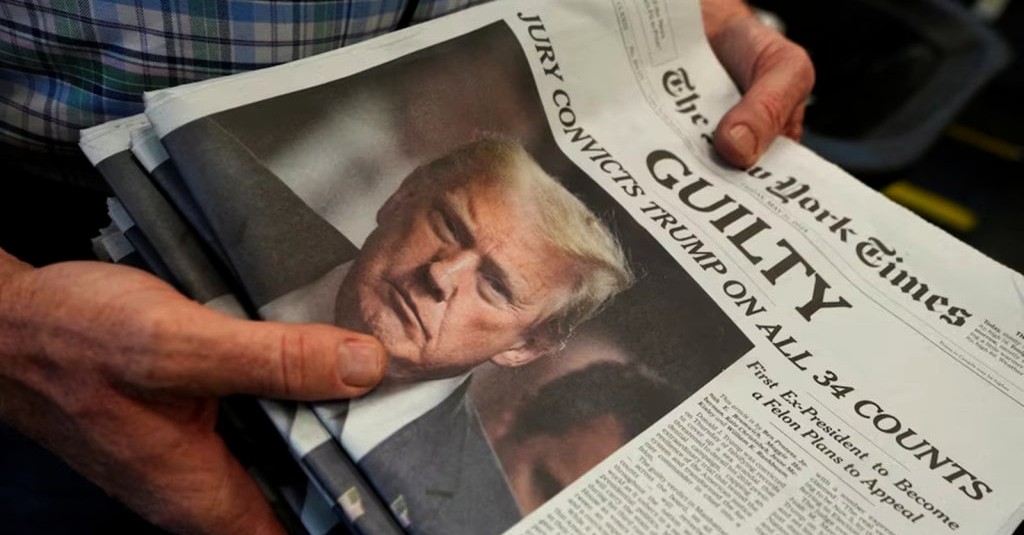The American system of justice can appear complicated to those seeing things unfold from abroad. Here’s an explainer.
Former Arkansas Governor Asa Hutchinson, a Republican, recently said this of Donald Trump’s recent conviction on 34 felony charges:
“You had 12 jurors who, from all appearances, really devoted themselves to seeking the truth in this case, and all 12 of them unanimously said on 34 counts, Donald Trump is guilty. I don’t think that should be lightly dismissed.”
He continued, “This is a serious moment for the United States of America. No one should be gleeful about a conviction of a former president, and Republicans should be very concerned that we have a presumptive nominee that has now been convicted of serious felony charges.”
Hutchinson’s comments provide a snapshot overview of how criminal justice plays out in the United States, and also provides a glimpse of its political implications. But for many living outside of the US, the complex and often bureaucratic-seeming legal system is confusing to say the least. The trial and conviction of a former president has now brought a lot of this to the fore.

HISTORY MADE
While those of us living in Malaysia have seen first-hand the successful prosecution and conviction of a former head of state – something that is actually not all that exceedingly rare around the world, in fact – in the long history of the United States, a president, either sitting or former, had never been charged with and subsequently convicted of a crime.
The closest was Richard Nixon, who in 1974 resigned the presidency in disgrace before he could be impeached and removed from office, a process which was a near-certainty, as Nixon had lost crucial support in the Congress.

However, in America, the impeachment process is a political one. Criminal prosecution is another matter entirely, one which no American president has ever been subjected to. Following Nixon’s resignation, he was subsequently fully pardoned by his successor, President Gerald Ford, a decision that drew widespread condemnation at the time and remains controversial to this day. Because of that pardon, Nixon never faced any legal reckoning for his crimes, and the implications of that lack of accountability still resonate 50 years later.
As an American expat living in Malaysia, I am often asked about the political machinations in my home country – on matters of the bewildering Electoral College manner in which America elects its president, on foreign policy questions, on election predictions, and most recently, on how criminal justice is handled in the United States – specifically with regard to the trial and conviction of Donald Trump.
On May 30, 2024, Donald Trump was convicted on all 34 felony counts in what the media erroneously and repeatedly characterised as a ‘hush money case,’ as Trump was alleged to have had a sexual encounter with a porn star while his wife was at home with their newborn son, then paid ‘hush money’ to cover up the affair. However, under US law, cheating on your wife isn’t illegal, and neither is paying someone for their silence. So what was the case about then?
Well, as is often the case, the affair itself was not the legal problem, but the cover-up was. According to the trial records, Donald Trump illegally falsified business records to conceal an agreement with others in his efforts to unlawfully influence the 2016 presidential election. Falsifying business records is a misdemeanor in New York unless it is done in tandem with or in the commission of another crime, which elevates the crime to a felony. And that is what Trump was charged with – 34 counts, to be specific.

THE BASICS
As a background, the basic facts of the process itself are indisputable. A potential case was brought against former President Donald J. Trump by the Manhattan District Attorney Alvin Bragg. A grand jury comprising ordinary American citizens was empaneled to determine whether the facts and evidence of the case warranted further action, called an indictment. In this case, the grand jury said ‘yes,’ and Trump was formally indicted, with 34 criminal charges, all felonies, levelled against him.
Months later, in the run-up to the trial itself, a jury of 12 citizens from Manhattan – the venue in which the alleged crimes were committed and where the charges were made – were randomly chosen from rolls of registered voters who met a list of certain qualifying criteria. None of these people asked or chose to be on the jury, and it’s quite possible that some were even supporters of Mr. Trump. For Americans, serving on a jury is a civic responsibility when called to do so. However, being summoned to jury duty does not necessarily mean you will serve on the jury.
Both the prosecuting team and the defense team will try to select jurors that they feel may view things similarly to their respective side. Each side may ask questions and learn more about the potential juror before accepting or dismissing that person. Both sides get a fixed number of dismissals, and both sides must agree on each of the 12 members of the jury and the alternates.
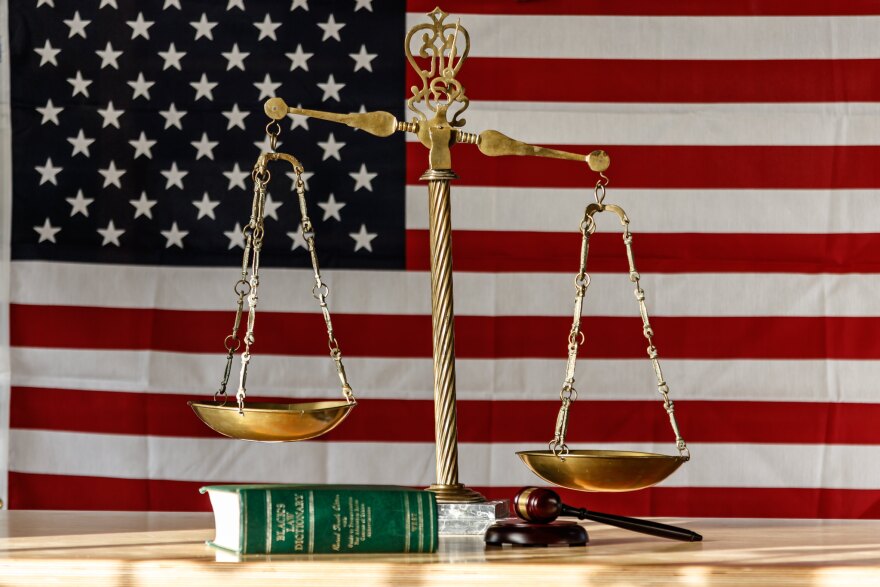
Then the trial begins. The decision, or verdict, of guilt or innocence is the jury’s and the jury’s alone. The presiding judge will instruct jurors on the trial process and in the application of law, but will not have any say over their decision. At the end of the criminal trial, the only voice that matters is that of the jury.
A DEEPER DIVE
Here is a fuller breakdown of how the criminal justice system works in America, and why, while definitely imperfect, it is still widely regarded as among the best in the world from a procedural perspective, with strong safeguards in place to protect individual rights. That said, the American system also deservedly attracts considerable criticism for its inconsistent application of that process, as well as for the country’s higher focus on incarceration rather than rehabilitation.
When considering the methodical steps of the process, as well as the strong (and often guaranteed by the US Constitution) checks put into place to ensure the rights of the accused are not violated, the devastating reality of a former president being convicted by a jury on 34 felony counts can truly be seen.

STEP-BY-STEP PROCESS IN THE AMERICAN CRIMINAL JUSTICE SYSTEM
1. Investigation and Arrest
- Investigation: Law enforcement agencies (like local police, state police, or the FBI) investigate a crime. This includes collecting evidence, interviewing witnesses, and sometimes conducting surveillance.
- Arrest: If there is enough evidence, a suspect can be arrested. An arrest requires either a warrant (issued by a judge based on probable cause) or, in urgent situations, can be done without a warrant if a crime is observed.
2. Charges and Indictment
- Charges: Prosecutors (lawyers representing the state) decide whether to file charges against the suspect. These charges outline the specific crimes the suspect is accused of.
- Grand Jury/Indictment: For serious federal and some state crimes, a grand jury (a group of citizens) reviews the evidence presented by the prosecutor to determine if there is enough to charge the suspect formally (indictment). In some state systems, this can also be done by a preliminary hearing before a judge.
3. Initial Hearing/Arraignment
- Arraignment: The defendant (the person accused of the crime) appears in court for the first time. Here, they are informed of the charges and their rights. The defendant will enter a plea (guilty, not guilty, or no contest).
4. Pretrial Proceedings
- Discovery: Both the defense (lawyers representing the defendant) and the prosecution exchange evidence and information they will use in court.
- Motions: Lawyers may file motions (requests for the court to make decisions on certain issues). For example, they might request to suppress evidence that was illegally obtained.
5. Trial
- Jury Selection: If the case goes to trial, a jury of citizens is selected to hear the case. Both the defense and prosecution can question potential jurors and dismiss some of them. Jurors are sworn in, stating under oath that they will judge the case on the facts and the law only, and will be impartial.
- Trial Process: The trial includes opening statements, witness testimony, cross-examination, and closing arguments. Both sides present their evidence and question witnesses.
- Verdict: The jury deliberates (discusses the case in private) and then delivers a verdict (decision). The verdict must be unanimous in federal and most state cases (all jurors agree) to convict.
6. Sentencing
- Sentencing Hearing: If the defendant is found guilty, a judge will determine the punishment based on guidelines and the specifics of the case. This can include fines, probation, or imprisonment.
7. Appeals
- Appeals Process: The defendant has the right to appeal (ask a higher court to review the case) if they believe there was a legal error that affected the verdict or the sentence. Appeals focus on legal mistakes rather than factual disagreements.
PROTECTIONS AND DUE PROCESS RIGHTS FOR DEFENDANTS
- Presumption of Innocence: Defendants are considered under the law to be innocent until proven guilty. The burden of proof is on the prosecution.
- Right to an Attorney: Defendants have the right to legal representation. If they cannot afford an attorney, one is provided by the state.
- Right to a Fair Trial: Trials must be public, and defendants have the right to an impartial jury.
- Right to Remain Silent: Defendants cannot be forced to testify against themselves.
- Right to Confront Witnesses: Defendants can cross-examine witnesses who testify against them.
- Protection Against Double Jeopardy: Defendants cannot be tried twice for the same offense once acquitted or convicted.
These steps and protections ensure that the criminal justice system aims to be fair and just, providing multiple safeguards to prevent wrongful convictions and to protect the rights of individuals accused of crimes.

BURDEN OF PROOF AND STANDARDS OF PROOF, EXPLAINED
Burden of Proof
In the American criminal justice system, the burden of proof refers to the obligation of one party to prove their claims to a certain standard. In criminal cases, this burden rests solely on the prosecution. This means that the prosecutor must demonstrate the defendant’s guilt. The defendant does not have to prove their innocence.
Beyond a Reasonable Doubt
“Beyond a reasonable doubt” is the highest standard of proof used in the American legal system. It is required in criminal trials to ensure that there is a very high level of certainty before convicting someone of a crime. Here’s how it works:
- Highest Standard: This standard is higher than “preponderance of the evidence” (used in civil cases) and “clear and convincing evidence” (used in some civil and administrative proceedings). It demands that the evidence presented by the prosecution must be so convincing that there is no reasonable doubt left in the mind of a reasonable person about the defendant’s guilt.
- Protecting the Innocent: This stringent standard is in place to protect individuals from wrongful convictions. The idea is to avoid convicting an innocent person, even if it means that some guilty individuals might go free. The principle behind this is often summarized by the phrase, “It is better that 10 guilty persons escape than that one innocent suffer.”
- Jury Instruction: During a trial, the judge will instruct the jury that they must only convict if they are firmly convinced of the defendant’s guilt. If there is any reasonable doubt, the jury is obliged to acquit. This ensures that the decision to convict is based on a high degree of certainty and not just a guess or a possibility.
- Application in Court: In practical terms, the prosecution must present a compelling and coherent case, demonstrating through evidence and witness testimony that the defendant committed the crime. The defense, on the other hand, will attempt to introduce reasonable doubt through cross-examination, presenting their own evidence, and challenging the credibility of the prosecution’s case.
- Unanimous Verdict Required: Whether the defendant is found guilty or not guilty, the verdict returned by the jury must be unanimous. Thus, in order to convict, all 12 jurors must agree the defendant is guilty beyond a reasonable doubt.
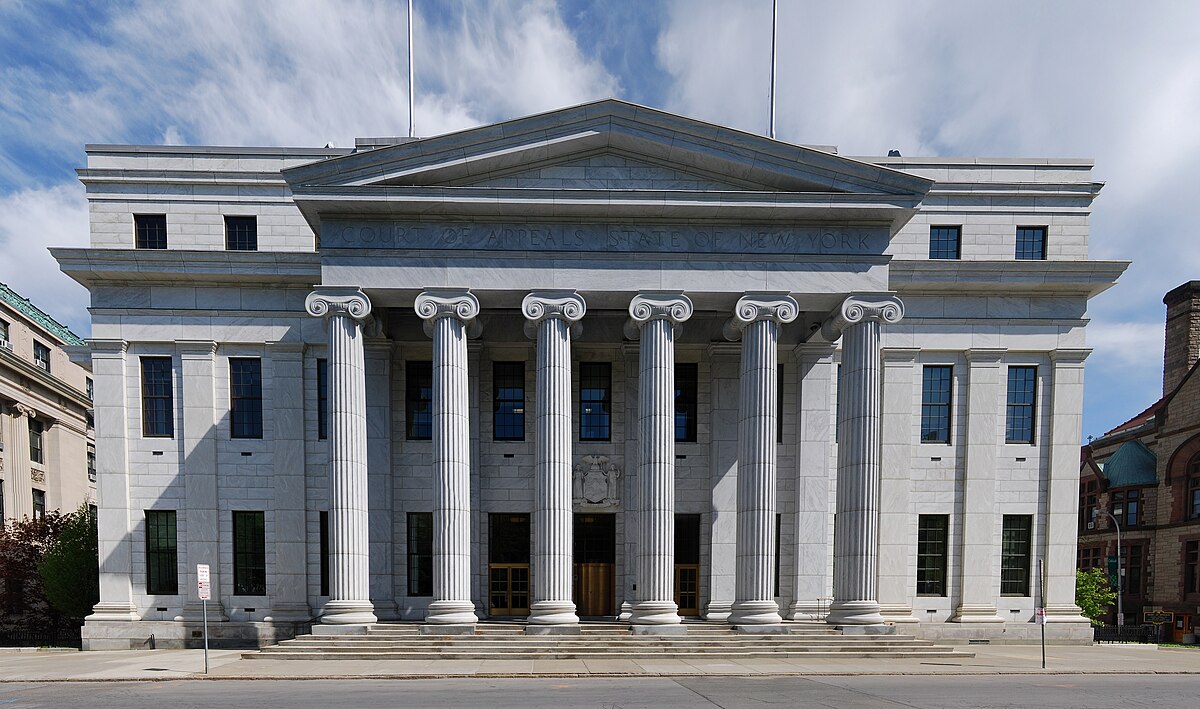
EQUAL TREATMENT UNDER THE LAW
As a criminal defendant, Donald Trump enjoyed all of these rights and protections, and was – often to the dismay of his critics – actually afforded far more leniency and latitude in some instances because of his status.
So what I tell those who ask me about the trial is similar to what former Governor Hutchinson said. Donald Trump was charged with multiple felony crimes, but like all criminal defendants, was considered to be innocent until proven guilty in a court of law. A random jury of ordinary American citizens was selected and then vetted and approved by Trump’s defense team.
The entire burden of proof – to the very highest standard under American jurisprudence, “guilty beyond a reasonable doubt” – was with the prosecution. Trump did not have to prove anything. He had every right of defense, he had the right to take the stand and defend himself (he chose not to do so), and he had the right to call witnesses of his own and to also cross-examine any witnesses called by the prosecution.
After five weeks of trial proceedings, having heard from many witnesses, seen documentation and other evidence, and heard all of Trump’s defenses, the jury of seven men and five women deliberated. That decision-making process took about nine hours over two days, a very short time, which generally indicates compelling evidence and testimony, along with a very high certainty of the verdict. The jury returned a verdict of guilty on all 34 felony counts.
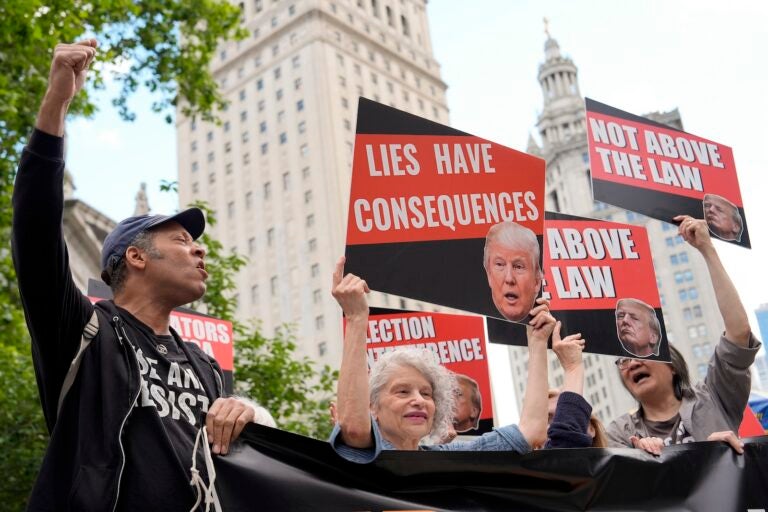
The unanimity of the verdict is required, but many observers felt a split verdict on the charges was a likely outcome – Trump would be found guilty on some of the 34 charges, but acquitted on others. Some also believed a ‘hung jury’ was a very possible outcome, which occurs when one or more jurors dissent from the verdict. If all 12 jurors cannot agree to convict or acquit, then the jury is hung and a mistrial is declared. It is, in a legal sense, as if the trial never happened, and prosecutors have to decide whether to start all over again and bring the defendant to trial for a second time. That was believed to be a real possibility, as just one Trump-sympathizing holdout could easily hang the jury.
That did not happen, of course, and the jury returned its unanimous and, for Trump, devastating verdict with surprising speed and surety. The former president was convicted on all 34 felony charges.
Trump’s lawyers, his sycophants in the Republican Party, and the ex-president himself have all vowed to appeal and fight on, and to be clear, that is the right of any criminal defendant upon conviction and sentencing. But legal experts are overwhelmingly confident that this conviction will not be overturned, with one former federal prosecutor with over 30 years’ experience declaring the probability of a successful appeal in the New York appellate courts at “zero-point-zero percent.”
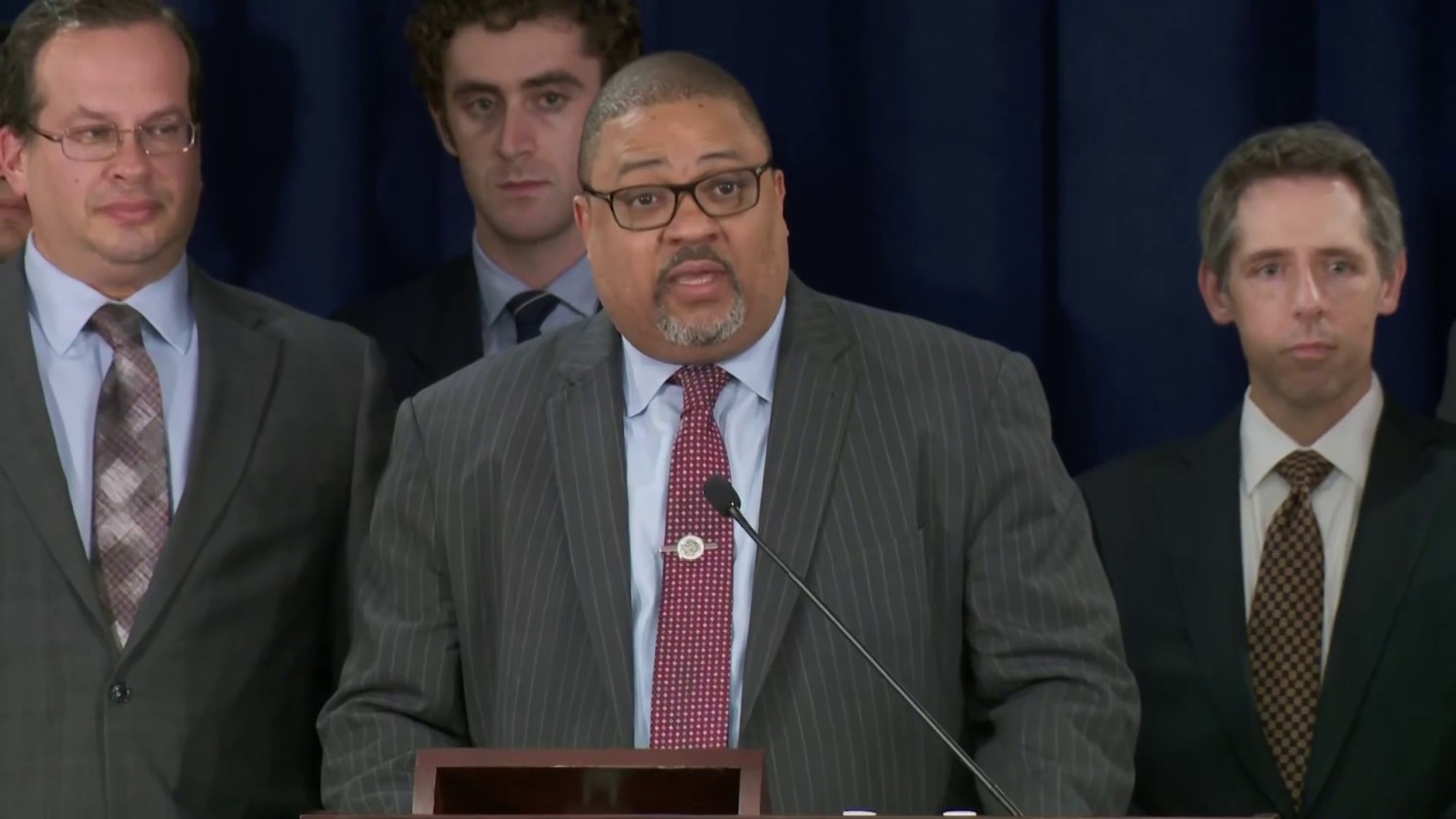
Many Trump supporters, along with Trump, have claimed without basis that the trial was ‘rigged,’ was a weapon deployed by the Democrats, or even that President Joe Biden himself orchestrated it. This is all nonsense, of course, as the process itself precludes any such thing. As we have seen, the sole power to render a verdict lies with the jury. No other party has any say in the matter, and the only voice that matters in the end is that of those 12 jurors, who must speak as one. In this case, that jury determined, based on the evidence and the law, that Donald Trump was guilty beyond any reasonable doubt of all 34 felonies with which he was charged.
For the first time in America’s history, a former president is now a convicted felon. What’s more, Trump still has three other criminal trials ahead of him, collectively totalling 54 additional felonies, all of them arguably more serious than those on which he was just convicted in New York.
Another question I am asked is how Trump could possibly run for president again, given the circumstances. The answer is simply that there is no provision in the Constitution that prevents or prohibits a convicted criminal from seeking the presidency. It could certainly be argued (correctly, in my view) that this was a terrible oversight by the framers of the US Constitution, but regardless of any individual opinion, the fact remains: Trump can, at least in theory, not only run for the office, but also serve as president as a convicted felon, even if he is in prison.
Nothing even close to such a scenario has ever been put to the test in America’s history, but over the last eight years, Trump has repeatedly pushed the boundaries of political norms and tested the limits of the country’s government and its institutional ‘guardrails’ – and seems poised to do so once again.
Trump’s sentencing, which is at the discretion of the trial judge and could include anything from probation to a period of incarceration in prison, will take place on July 11.
"ExpatGo welcomes and encourages comments, input, and divergent opinions. However, we kindly request that you use suitable language in your comments, and refrain from any sort of personal attack, hate speech, or disparaging rhetoric. Comments not in line with this are subject to removal from the site. "


